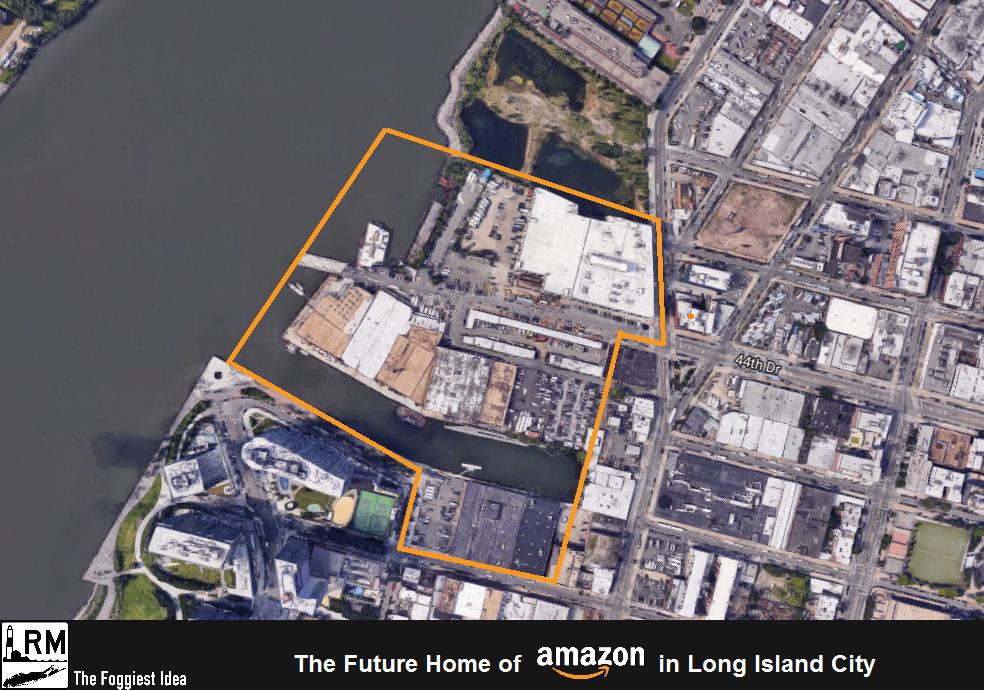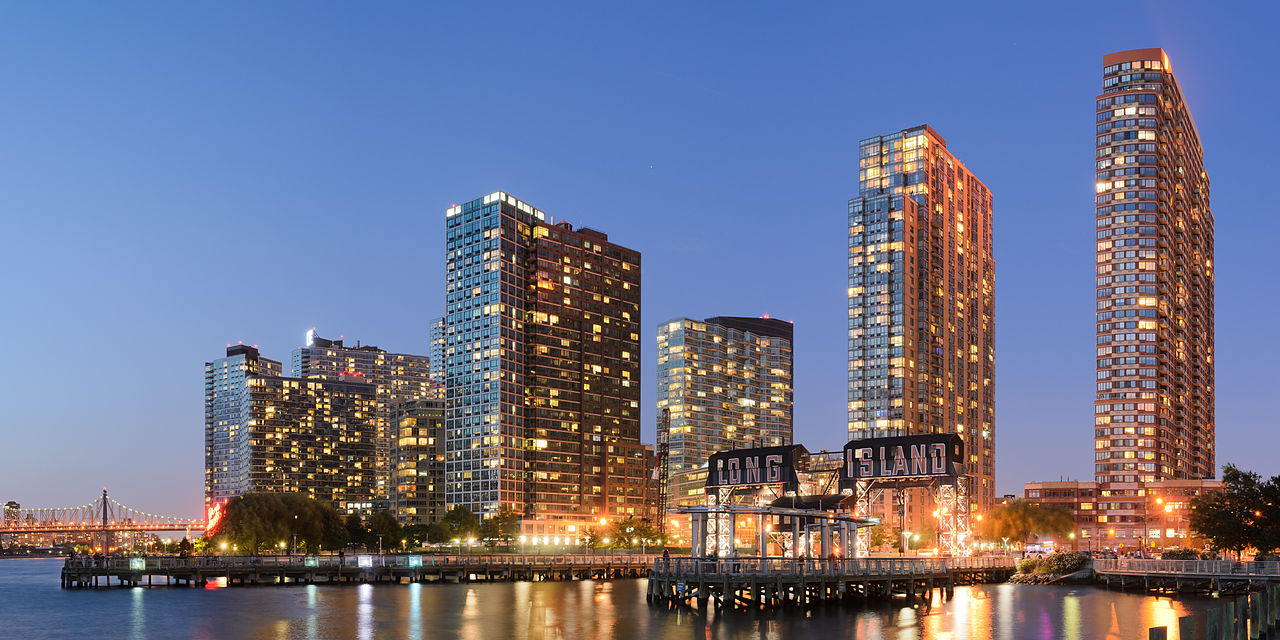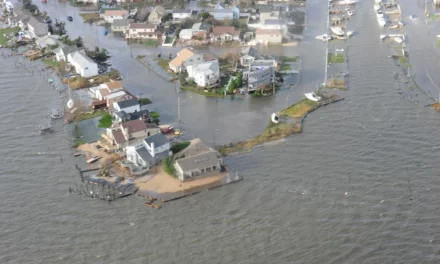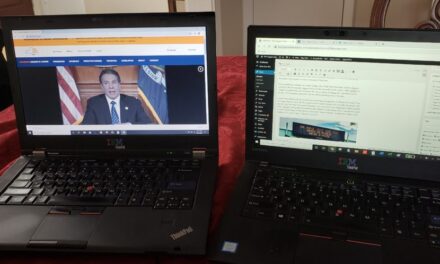The tech-giant’s selection, first reported late on November 5th, 2018, is one of the most consequential development stories in recent memory. This report was updated on November 13th. Want to support The Foggiest Idea’s award-winning analysis and reporting? Click here.
By Richard Murdocco
Amazon, the tech giant that launched a multi-year search for a new city that the company can call home, has selected not one, but two locales for its next headquarters – the Crystal City portion of Arlington, Virginia in the suburbs of Washington D.C., and Long Island City, in Queens. Amazon plans to bring $2.5 billion in investments and 25,000 jobs to both locations.
The New York Times first broke the story showcasing the location selections, which has been the subject of intense speculation, and the company confirmed the location on November 13th. The details of the agreement the company brokered with both the City and State can be read here.

The future home of one of Amazon’s HQ2 locations on Vernon Avenue, between 46th Avenue and 44th Drive in Long Island City.
The selection of both areas may prove to be one of the most consequential development-related stories in recent memory due to the monumental economic numbers at stake. When the contest was first announced in September 2017, Jeff Bezos, Amazon’s founder and CEO, announced that the company will spend $5 billion on the new headquarters and hire around 50,000 employees – with average salaries topping $100,000, a claim since bumped by the company.
At its frenzied peak, the courting of Amazon led elected officials in nearly 240 municipalities to offer the company billions in tax incentives, promises of new transit links, and even inspired policymakers in Tucson, Arizona to mail a 21-foot cactus.
In the end, the selection of both Long Island City and Crystal City by Amazon makes sense. According to reports, New York is already home to 1,800 people who work for the company, and roughly 2,500 of Amazon’s employees work in nearby Northern Virginia and Washington. Bezos also owns homes near both spots.
The company noted that Long Island City was a good fit for their needs due to the ample transit access of the area, citing eight subway lines, 13 bus lines, commuter rail, a bike-sharing service, as well as ferries serving the area. The proximity of two major airports nearby helped as well. The company will create 4 million square feet of green office space, and generate estimated incremental tax revenue of more than $10 billion in the next two decades.
In total, the State has pledged $2.988 billion in incentives, all while estimating the company will generate $27.5 billion in revenue.
Early calculations estimate the costs to essentially amount to $48,000 per job for each of the 25,000 jobs promised. In addition, the state is providing a $325 million cash grant from Empire State Development based on the square footage of buildings occupied within the next decade. Amazon is slated to incrementally receive these incentives through 2033 based on the jobs created and offices occupied. If Amazon does not hit their benchmarks, they will not get the money.
The community the company joins has been an epicenter for growth in the region.
Long Island City has undergone a residential renaissance in recent years, with RENTCafé, a real estate research site that specializes in apartment-centric trends, estimating the area added 12,533 apartments in around 41 developments during the years between 2010 and 2016. The New York Post‘s Steve Cuozzo projected that an additional 25,000 units are in the developmental pipeline – a number likely to increase as the tech company begins to establish it’s foothold in the already booming area. Since the announcement, The Wall Street Journal is reporting that there has been “a condo gold rush” in the area.
On the commercial side , there is plenty of space available to absorb the newfound demand brought by Amazon.
This past July, Citibank announced they will be leaving over 949,000 square feet of vacant space in their landmark 53-story One Court Square, while the Jacx, a double-tower that is currently under construction by Tishman Speyer, will create 1.2 million square feet of office space in the area by the time the project is completed in 2019. While 70% or so of the Jacx is already leased to both WeWork and Bloomingdale’s/Macy’s, the rest of the building can still provide space towards the 500,000 square feet or so Amazon claims they initially will need.
Prices have steadily trended upward even before Amazon rendered it’s decision, with rents climbing to an area record of over $46 per square foot in the second quarter of 2018, according to data from Newmark Grubb Frank. With the company now coming, the trend is likely to accelerate.
Still, concerns linger about the area’s ability to absorb the explosive newfound growth. Shortly after the story about Amazon broke, the Times was reporting that members of the local community board were already expressing worry about the effects the new Amazon headquarters will have, with local leaders citing concerns about traffic, rising land costs, and overcrowding at local schools.
The local criticism was further fueled once the details of the deal became public.
“Amazon is one of the richest companies in the world,” City Council Speaker Corey Johnson said in a statement issued after the details of the deal became public. “You can’t put a price on community input, which has been missing throughout this entire process. I find that lack of engagement and the fact that the negotiations excluded the City Council extremely troubling.”
Other local electeds piled on. “New Yorkers have real unmet needs from their government,” New York State Senator Michael Gianaris and City Council Member Jimmy Van Bramer said in a joint statement. “Our subways are crumbling, our children lack school seats, and too many of our neighbors lack adequate health care. It is unfathomable that we would sign a $3 billion check to Amazon in the face of these challenges.”
Others, such as former NYC mayor Michael Bloomberg, were more cheerful. “Amazon’s decision to locate to Long Island City is an affirmation not only of NYC’s growing tech talent, but also of all the investments – in housing, schools, parks, transportation, and culture – that have turned LIC into such a thriving neighborhood,” he wrote on Twitter.
“This is the largest economic development initiative that has ever been done by the city or the state, or the city and the state together, believe it or not” Governor Andrew M. Cuomo said at a news conference following the announcement. “Either you are creating jobs or you are losing jobs,” the governor opined.
To ease the pain, a recent spending plan released by the City argued for policymakers to take a renewed focus on working with both the MTA and Amtrak to create a new station at Sunnyside Yards near Queens Boulevard, an area already being targeted for it’s own concentrated growth, as well as reconfigured bus routes and service to better adapt to needs.
Other companies that call Long Island City home include Silvercup Studios and JetBlue Airways.













